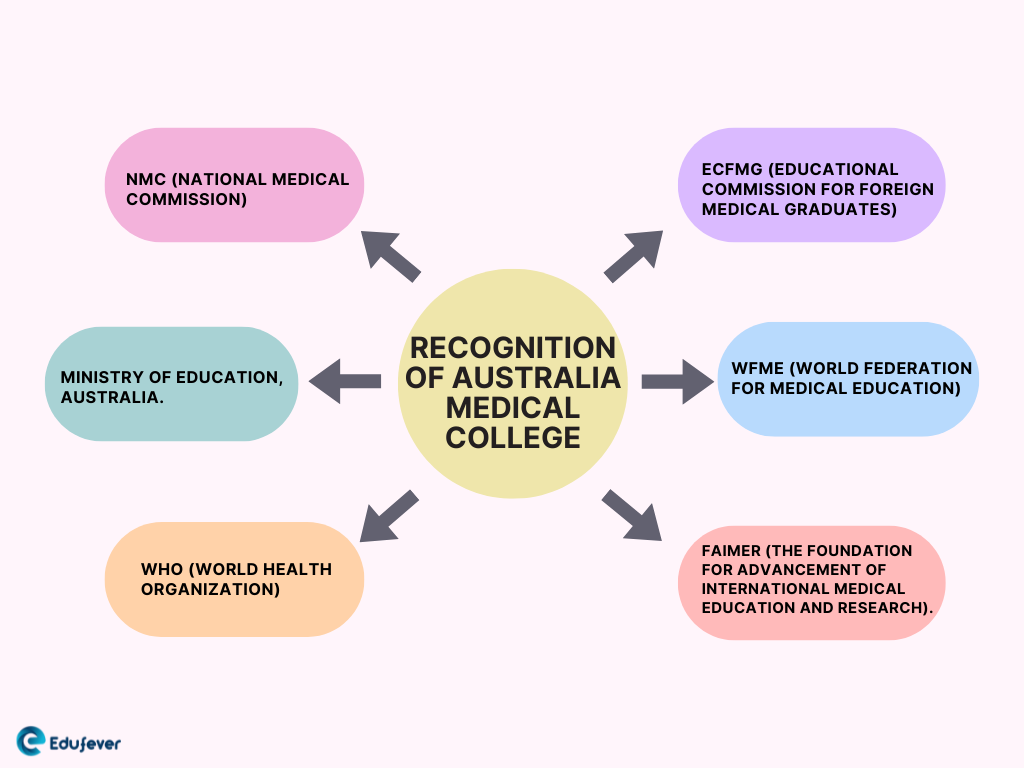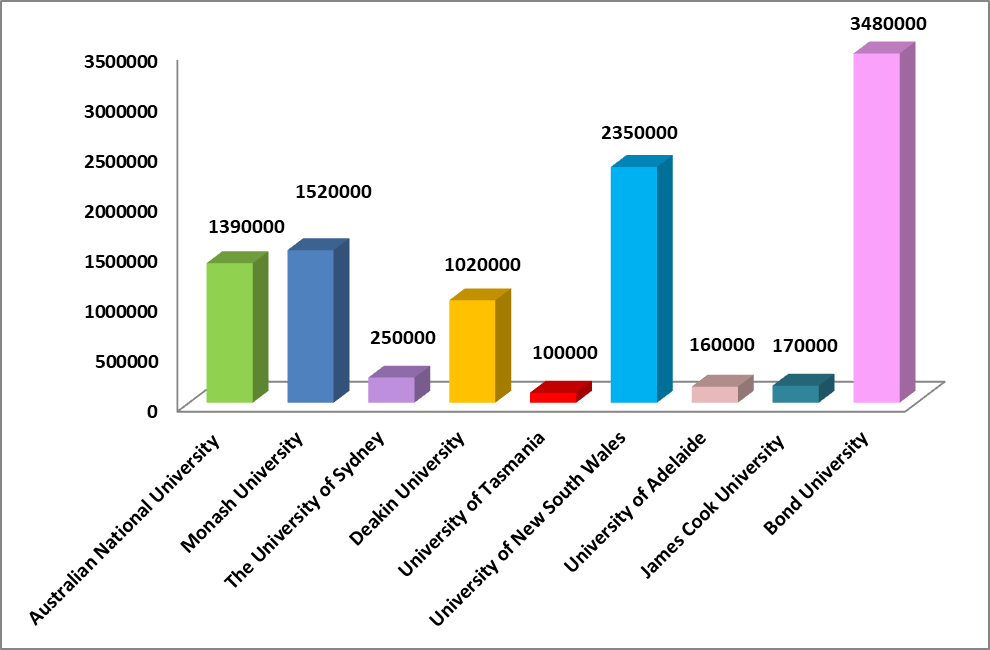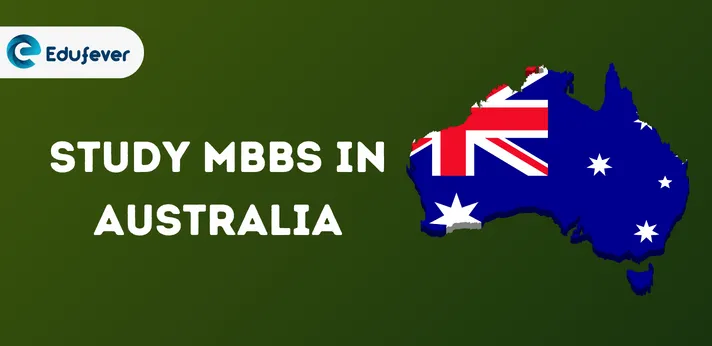Australia, a sovereign nation encompassing the mainland, Tasmania, and various smaller islands, boasts over 1100 medical institutes offering MBBS programs. Australia hosts a diverse educational landscape with a student body exceeding 750,000, including over 22,000 international students. The top medical universities, often accredited by the NMC and WHO, offer programs with affordable fee structures. Prospective students can pursue MBBS in Australia through two main pathways: a 4-year Doctor of Medicine (MD) program or a 5-6-year undergraduate degree. The MBBS curriculum in Australia shares similarities with that of India, providing students with comprehensive medical education.
Candidates must be NEET Eligible, with a minimum score of 50 Percentiles for both general and reserved category candidates. Opting for an MBBS degree at any Australian medical university is a prudent decision as it is globally recognized, ensuring portability and acceptance across borders.
[Page Index]
Country Summary
Australia, the smallest continent and one of the largest countries on Earth, lies between the Pacific and Indian oceans in the Southern Hemisphere. Australia’s capital is Canberra, located in the southeast between Sydney and Melbourne’s more significant economic and cultural centres.
| Population | 27,090,200 |
| Area | 7,692,024 km2 |
| Capital City | Canberra |
| Language | Official Languages: English |
| Climate | temperate and marine |
| Literacy Rate | 99% |
| Time Zone | (GMT+11) Australian Eastern Daylight Time |
| Currency | Australian dollar |
| Religion | 52.1% Christian: 22.6% Catholic, 13.3% Anglican, And 8.2% Australian non-Christian religions. |
Quick facts
Before reading the complete information about MBBS in Australia, let’s look at Quick facts:
| Course Offered | Bachelor of Medicine and Bachelor of Surgery (MBBS) |
| Course Duration | 5 – 6 Years |
| Basic Eligibility | 50% in 10+2 Science (PCB) |
| University Recognition | NMC & Who- accredited |
| Medium of Teaching | English |
| Entrance Exam | NEET (Qualified Only) |
Recognition of Australia Medical College
The most critical factors in deciding on a good medical college are checking the affiliation, recognition, and other affiliating parameters. So, Indian students are affiliated with these authorities for MBBS in Australia.
- Ministry of Education, Australia.
- NMC (National Medical Commission)
- WHO (World Health Organization)
- ECFMG (Educational Commission for Foreign Medical Graduates)
- WFME (World Federation for Medical Education)
- FAIMER (The Foundation for Advancement of International Medical Education and Research).
Graphical Representation of Recognition of Australia Medical College

Why study MBBS in Australia?
- High-Quality Education: Australian universities are renowned for their high education and research excellence standards. MBBS programs are designed to equip students with comprehensive medical knowledge and practical skills.
- Global Recognition: An MBBS degree from an Australian medical university is recognized worldwide, opening up diverse career opportunities internationally.
- State-of-the-Art Facilities: Australian medical schools have modern facilities, including advanced laboratories, simulation centres, and clinical training opportunities in leading hospitals.
- Multicultural Environment: Australia is a culturally diverse country that welcomes students from all over the world. Studying in such an environment fosters cross-cultural understanding and collaboration.
- Excellent Quality of Life: Australia offers a high quality of life with a stable economy, excellent healthcare system, safety, and a relaxed lifestyle.
Admission Procedure
If you want to take the admission in Australia in 2024, you must qualify for the National Eligibility Entrance Exam (NEET) for Indian students.
Eligibility Criteria
The preferred destination for international students is Australia, where they can pursue their medical degree courses. Check the eligibility criteria below if you want to study MBBS in Australia.
| Age | Your age should be at least 17 on or before 31st December of the admission year. |
| Qualification | Candidates must have completed 10+2 from a recognized board or institute or have Equivalent and non-premedical backgrounds. |
| Minimum Qualifying (%) | 50% in 10+2 Science (PCB) |
| Qualifying Entrance | NEET (Qualified Only) |
Documents Required
Before applying for admission to MBBS in Australia, please do not forget to bring all these related documents.
- Passport (Minimum 18 months validity).
- Class 10th Passing Certificate & Mark sheet.
- Class 12th Passing Certificate & Mark sheet.
- Birth Certificate.
- 10 passport-size Photographs
- Official Invitation letter from the Medical University of Australia.
- Authorization of all documents from the Ministry of External Affairs, New Delhi.
- Legalization of all documents from the Australian Embassy.
- Visa fees.
- Bank receipt of University 1st year Tuition fee (required for some Universities).
- Medical test documents.
MBBS Syllabus in Australia
The MBBS syllabus in Australia covers all the essential topics necessary to help you become a successful professional in the field. Let’s take a look at some of the main issues which are part of the course syllabus of MBBS in Australia:
| Year | Subject |
|---|---|
| First Year | Human Anatomy, Bio-organic Chemistry, Embryology, Cytology, Medical Chemistry, Fundamentals of Psychology, Histology, Elective Courses |
| Second Year | MicrobiologyPhysiology, Biochemistry, Histology, Human Anatomy, Emergency Medicine, Embryology, Patient Care |
| Third Year | Biostatistics, Pharmacology, Internal Medicine Pathomorphology, Pediatrics, Pathomorphology, Ecology, General Surgery, Radiology, Elective Courses |
| Fourth Year | Surgery, Ophthalmology, Neurology, Tuberculosis, Social Medicine, Narcology, Obstetrics and Gynecology, Urology, Forensic Medicine, Medical Psychology |
| Fifth Year | Obstetrics, Traumatology, Gynaecology, Infectious Diseases, Clinical Immunology, Social Medicine, Epidemiology, Genetics Oncology |
| Sixth Year | General Practice, Elective courses |
Note: The above syllabus is for reference purposes only. The actual syllabus may vary according to different universities.
Top MBBS Colleges in Australia with Fee Structure
Here is the updated 2024-25 of all Australia MBBS Colleges officially made by India’s Medical Council. For detailed info about fee structure, Courses offered, Admission Procedure, and Ranking, and to complete the college review, click the college link or Read more. It will provide a list of the best medical colleges.
| Top MBBS Colleges in Australia | Fees in INR |
|---|---|
| The Australian National University Medical School | 29,24,617 INR |
| Monash University | 27,85,872 INR |
| The University of Sydney | 46,06,560 INR |
| Deakin University | 42,44,616 INR |
| University of Newcastle | 25,14,414 INR |
| University of New South Wales | 28,16,582 INR |
| University of Adelaide | 45,79,140 INR |
| James Cook University of Medical School | 1700000 INR |
| Bond University | 3480000 INR |
| University of Western Australia | 29,55,273 INR |
| University of Queensland | 46,62,716 INR |
| University of Melbourne | 44,43,356 INR |
Top MBBS Colleges in Australia with Fee Structure (Graphical Representation)

Other Top MBBS Colleges in Australia
| Top Medical Schools in Australia | MBBS/Medical Degree |
| Faculty of Medicine, Nursing and Health Sciences, Monash University | BMed/Sc MBBS Hons MD |
| Deakin University School of Medicine | MBBS MD |
| University of Western Sydney | MBBS BClinSci/MD |
| The University of Adelaide Medical School | MBBS |
| Faculty of Health Sciences and Medicine, Bond University | MBBS BMedSt/MD |
| Griffith University | MBBS MD |
| Macquarie University School of Medicine | MD |
| University of Notre Dame School of Medicine, Sydney | MBBS MD |
| University of Newcastle University of New England | MBBS BMedSc/MD |
| University of Wollongong | MBBS MD |
| Flinders University School of Medicine | BMBS MD |
| Curtin Medical School, Curtin University | MBBS |
| University of Tasmania | MBBS |
| Royal Australasian College of Physicians Sydney | MBBS MD |
| St Mary’s School of Medicine Cook Island | MBBS MD |
Scholarships for MBBS in Australia
If you want to pursue a low-cost MBBS in Australia, there are several universities to choose from. The list of some such scholarships in Australia is given below:
| Award | University | Scholarship |
|---|---|---|
| Monash International Merit Award | Monash University | 50,000 AUD-1,00,000AUD |
| Sydney Achievers International Award | University of Sydney | 10,000 AUD |
| Lindsay MCWha International Accommodation Funding | University of Adelaide | 50% waiver on the accommodation cost of the candidate |
| Destination Australia Scholarships International | Deakin University | 15,000 AUD every year |
| Deakin Warrnambool Residential International Scholarships | Deakin University | around 50% waiver on the accommodation fee of the applicant |
| India Global Leaders Scholarship | University of Queensland | 5,000 AUD-20,000 AUD |
| ANU- Study Canberra India Scholarship | Australian National University | 10,000 AUD per year |
Advantages and Disadvantages of Studying in Australia
There is one medical university offering higher learning in Australia. Enthralling, right? The higher education system is of high quality, and all leading universities offer programmes taught in English in study areas such as medicine, engineering, humanities, business, and finance. There are a lot of advantages to studying in Poland; here are just a few:
Advantages of studying in Australia for Indian Students
- Colleges in Australia don’t ask for any donations during admission.
- Elite bodies like the WHO and NMC acknowledge medical colleges in Australia.
- The cost of living for Indian students can be quickly earned by doing part-time work.
- Australia MBBS Colleges follow the mode of the English language as it is one of the most spoken languages in the world.
- Hostel accommodations are comfortable and up to the mark for a student’s comfort.
Disadvantages of studying in Australia for Indian Students
- As Polish is the local language in Australia, students might feel the language is a barrier (outside the university campus).
- One of want might have to put extra effort into learning the Polish Language after the class hour.
- Those who wish to study and work together to cover their expenses may face difficulties because it requires a lot of self-study and concentration.
- In hospitals, international students cannot touch patients during an internship while studying MBBS in Australia.
Frequently Asked Questions (FAQs)
How many years is MBBS in Australia?
Bachelor of Medicine and Bachelor of Surgery (MBBS) in Australia. MBBS is a five to six-year undergraduate degree in Australia.
Which exam is required for MBBS in Australia?
To study MBBS in Australia, it is mandatory to clear UCAT/UMAT/NEET, a clinical aptitude test for students pursuing MBBS in Australia.
How many medical colleges are there in Australia?
Australia is home to around 19 medical schools offering quality medical degree programs across varied disciplines, from General Medicine and Surgery to Biomedicine.
What is the eligibility for studying MBBS in Australia?
Undergraduate medical courses such as MBBS in Australia require basic qualification from any recognized high school and an IELTS score. Candidates appearing for the master’s program need to clear UMAT.
What is MBBS abroad?
MBBS abroad is a chance to study and complete your MBBS degree from a foreign university in a foreign country.

